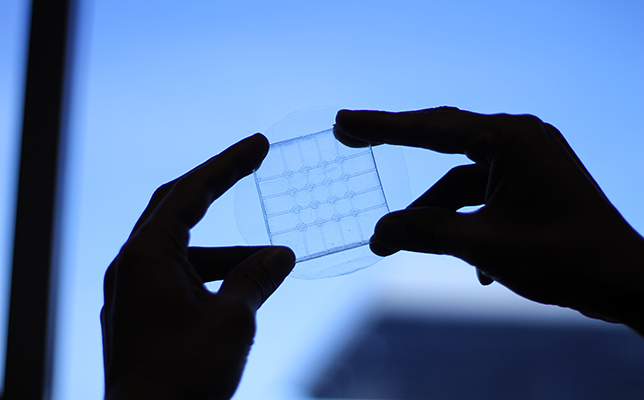Canadian Researchers Design Bendable Sensors for Next-Gen Touchscreen Devices, Wearables and More

Images Courtesy of the University of British Columbia.
Imagine folding up a tablet and putting it in your pocket or purse after using it. This may be a possibility for the next generation of touchscreen devices, wearables and other items, thanks to a flexible and stretchable touch sensor being developed at the University of British Columbia (UBC) in Canada.
A recently published paper in the journal Science Advances explained that the sensor works by using stretchable and ionically conductive hydrogel electrodes. A highly conductive gel is squeezed between layers of bendable silicone (created through a simple molding process to generate films). It projects an electric field above the sensor to detect different types of touch — even while it is bent.
“There are sensors that can detect pressure, such as the iPhone’s 3D Touch, and some that can detect a hovering finger, like Samsung’s AirView. There are also sensors that are foldable, transparent and stretchable. Our contribution is a device that combines all those functions in one compact package,” said Mirza Saquib Sarwar, a Ph.D. student in electrical and computer engineering at UBC, in a statement.
The research is part of a larger effort to create wearable devices and to create robotic skins. John Madden, a UBC professor of applied science who is supervising the research, said the sensor could be added in robotic “skins” to make human-robot interactions safer.
“Currently, machines are kept separate from humans in the workplace because of the possibility that they could injure humans. If a robot could detect our presence and be ‘soft’ enough that they don’t damage us during an interaction, we can safely exchange tools with them, they can pick up objects without damaging them, and they can safely probe their environment,” said Madden.
With the two materials being low in cost to produce, both Madden and Mizra think the prototype can be scaled up for a wide range of applications, like clothing, steering wheels, roads, etc.
The research was funded by the Natural Sciences and Engineering Research Council of Canada.
To learn more, watch the video below or visit UBC’s Department of Electrical and Computer Engineering site.
About the Author
Sri Ravipati is Web producer for THE Journal and Campus Technology. She can be reached at [email protected].